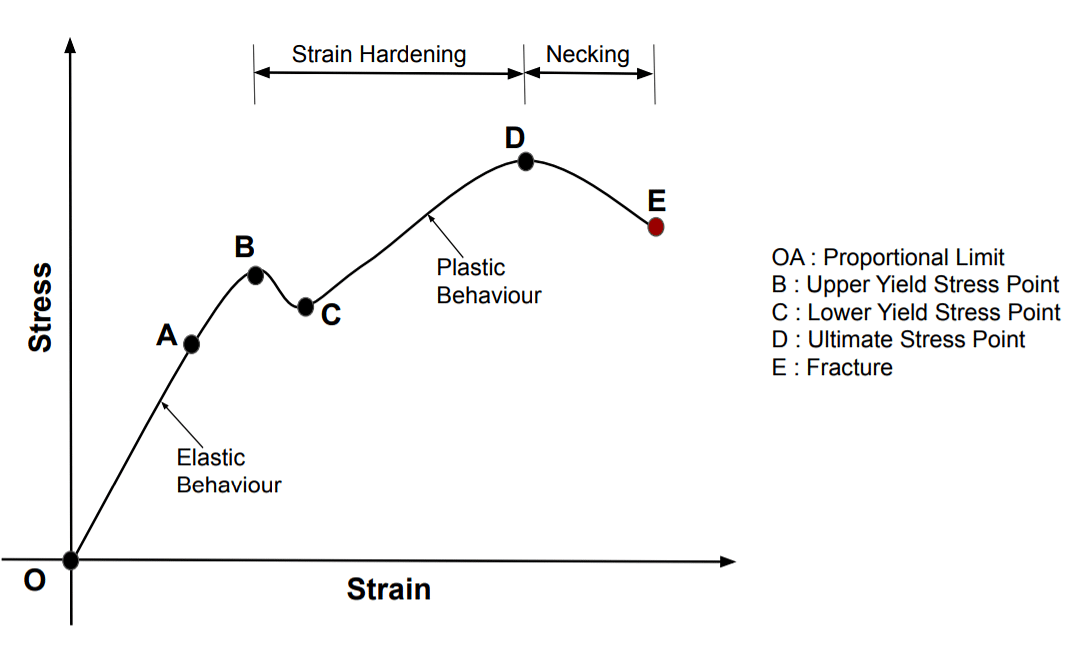Mechanical Properties of Solids must be prepared by all the Physics students. Check out the details of Hooke's Law, Poisson's ration, Young's modulus and other topics from the article mentioned below.
- Mechanical Properties of Solids- Elasticity
- Mechanical Properties of Solids- Stress and Strain Relationship
- Mechanical Properties of Solids- Stress and Strain Curve
- Mechanical Properties of Solids - Hooke's Law
- Mechanical Properties of Solids - Young’s Modulus
- Mechanical Properties of Solids - Bulk Modulus
- Mechanical Properties of Solids - Shear Modulus Of Rigidity
- Mechanical Properties of Solids - Poisson's Ratio

A solid is anything that has a size and a shape and there are a lot of properties that must be aligned to consider an object as a solid. Elasticity is one of the major properties of a solid. You must study the topic of mechanical properties of solids in order to prepare for your physics examination because it holds a lot of weightage in the subject. Check out some of the notes on the Mechanical properties of solids topic from the article provided below and prepare yourself for the physics examination accordingly:
Mechanical Properties of Solids- Elasticity
A solid is considered an object which has a definite shape and size and in order to change the shape or size of an object or a solid, force is required. Elasticity can be termed as the property of a body by virtue of which it will regain the original size and shape when the applied force is removed and the deformation which is caused by the force is called elastic deformation. On the other hand, the substance which does not have the tendency to regain its previous shapes are called plastic, and the property is called plasticity.
Examples of Elasticity
The prime example of elasticity is a spring and the prime example of plasticity is mud and putty.
Mechanical Properties of Solids- Stress and Strain Relationship
Whenever any force or forces are applied to a body in a manner that the body is still in static equilibrium, the body is deformed to a large extent or the small extent but the extent will depend upon the nature of the material of the solid and the magnitude of the deforming force. The deformation is always there whether it is visible or not but also a restoring force is developed in the body. The restoring force is equal in magnitude to the deforming force but the direction of the force is the opposite. The restoring force per unit area is known as stress. The SI unit of stress is N m–2 or pascal (Pa) and its dimensional formula is [ ML–1T–2 ]. On the other hand, strain is defined as the ratio in the change of the size of the shape to the original size or the shape of the solid.
Types of Stress
There are basically two types of stress as mentioned below:
- Normal stress refers to the stress when the deforming force is exerted normally to the surface of the body.
- Tangential stress refers to the stress when the deforming force is acting tangential to the surface of the body.
Types of Strain
There are basically three types of strain as mentioned below:
- Longitudinal strain refers to the deforming force when it produces a change in the length of the solid.
- Volumetric strain refers to the deforming force when it produces a change in the volume of the solid.
- Share screen refers to the angle tilt which is caused in the solid due to the tangential stress experienced.
Also Read:
- Physics Class 12 Units and Measurements
- Physics Class 12 Motion in a Straight Line
- Physics Class 12 Laws of Motion
Mechanical Properties of Solids- Stress and Strain Curve

When a curve is drawn between stress and strain then it is called the stress-strain curve. Stress is taken at the y-axis and strain is taken at the x-axis and a linear graph is formed in the ideal situation of Hooke's law. The curve shows that when the stress increases the strain on the material will also increase but after a certain point, the curve will become nonuniform. There comes a point when the stress and the strain are not proportional and that point is known as the yield point which is the elastic limit. The corresponding stress is also known as the yield strength of the material. Below this particular point, if the body can retain its original shape and size then it will do that but if the stress goes beyond the point the body will start deforming permanently and it is said to be permanently set.
Mechanical Properties of Solids - Hooke's Law
As per Hooke's law, it is said that within elastic limits the ratio of stress to the corresponding strain produced is always constant. The constant is called the modulus of elasticity. According to this law, Stress equals k*strain.
Mechanical Properties of Solids - Young’s Modulus
Young's Modulus refers to the ratio of longitudinal stress to the longitudinal strain and it is denoted by the symbol Y. You can easily get the value by dividing the longitudinal stress by the longitudinal strain. The value is valid within the elastic limit.
Mechanical Properties of Solids - Bulk Modulus
The bulk modulus of electricity refers to the ratio of hydraulic stress to the volume attractive strain and it is denoted by the symbol K. This is also valid within the elastic limit. If the value has a negative sign then it shows that with an increase in pressure there is a decrease in volume.
Mechanical Properties of Solids - Shear Modulus Of Rigidity
Share modulus of elasticity is the ratio of tangential stress to the shearing strain and it is denoted by the symbol n.
Mechanical Properties of Solids - Poisson's Ratio
As per Simon Poisson, it is said that within the elastic limit the lateral strain is directly proportional to the longitudinal stream. The negative sign in the value shows that the length of the wire is increasing but the radius of the wire is decreasing. The normal value of the unit will lie between -1 and +½. The practical value of the unit lies between zero to +½. This ratio is also dimensionless.
The students must prepare for the physics examination by considering all of the important topics included in the subject. Check out most of the notes related to the Mechanical properties of solids given in the article mentioned above to help you for the board examination!

















Similar Articles
UP B.Ed JEE 2024 Hindi/ English: List of Important Topics & Weightage
Jharkhand B.Ed Entrance Exam 2024: Admit Card, Exam Date (April 21), Answer Key, Result
Jharkhand B.Ed Entrance Exam 2024 Section-Wise Preparation Tips
Jharkhand B.Ed Entrance Exam 2024 Syllabus and Section-Wise Weightage
How to Prepare for Jharkhand B.Ed Entrance Exam 2024?
NEP 2020: 3-Year vs 4-Year Bachelor’s Degree, 1-Year Master’s Course, Exit Option, Multidisciplinary Education